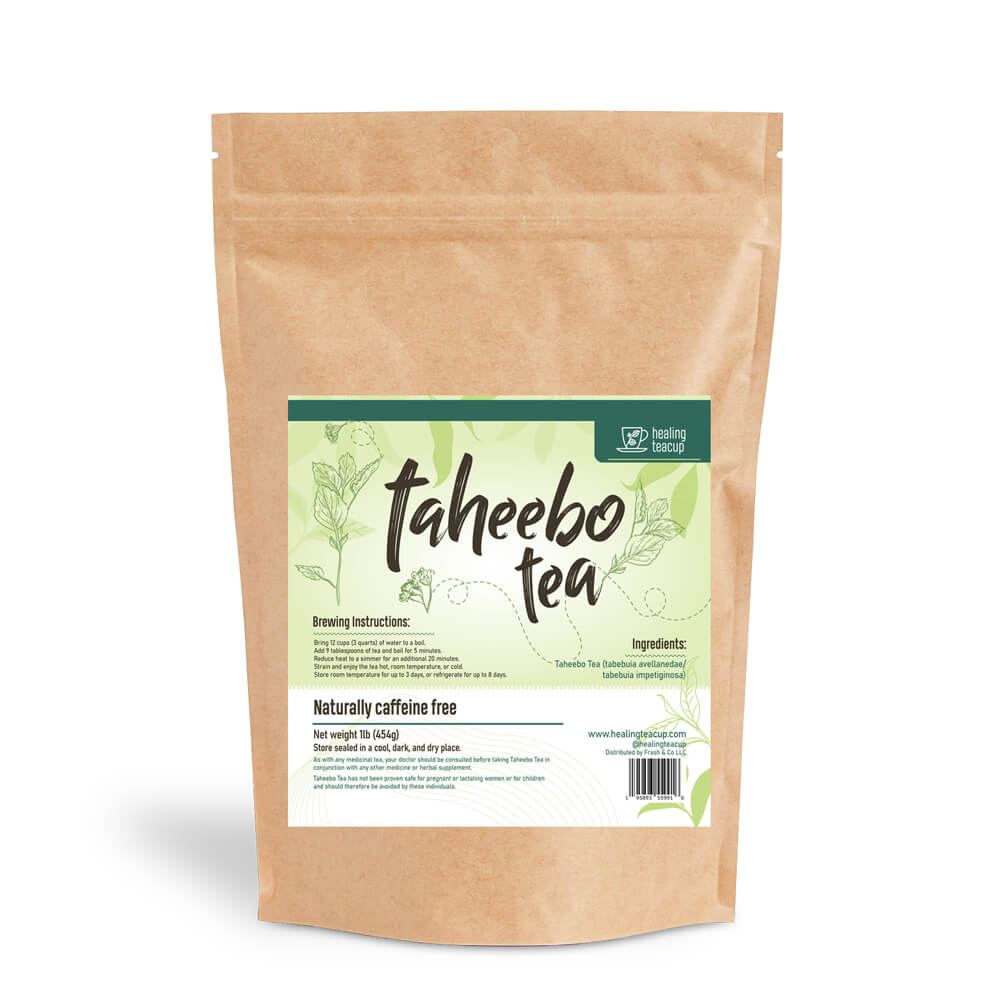Taheebo Tea for Candida Overgrowth and Fungal Infections
Struggling with Candida overgrowth? You’re likely searching for effective treatments, and Taheebo tea is touted as a natural ally in this fight. With potent antifungal properties, it’s highly regarded for managing Candida. This article provides a guide to taheebo tea for Candida, including evidence of its efficacy, and its place in a broader anti-Candida strategy.
Key Takeaways
- Taheebo tea, originating from the Pau D’Arco tree, contains active compounds lapachol and beta-lapachone which possess strong antifungal properties effective against Candida overgrowth.
- When dealing with Candida overgrowth, incorporating a multifaceted approach including Taheebo tea, complementary antifungal herbs, a low-sugar diet, and probiotics can enhance treatment efficacy.
- While Taheebo tea presents potential health benefits, it is essential to adhere to recommended dosages, consider possible side effects and drug interactions, and consult healthcare professionals before using it, particularly for pregnant women, lactating mothers, and individuals on blood-thinning medications.
Unlocking the Power of Taheebo Tea Against Candida

Taheebo tea, a potent herbal supplement, has been a cornerstone in traditional herbal medicine, where it has been utilized to combat various conditions, including Candida overgrowth. Its inherent antibacterial, anti-inflammatory, and antifungal properties make it a natural yet effective approach to fighting Candida overgrowth.
Alongside its potent anti-Candida effects, Taheebo tea yields a multitude of health benefits. It bolsters immune function and promotes healthy circulation and digestion, making it a valuable asset in the arsenal of traditional medicine.
The Antifungal Arsenal of Pau D'Arco
The Pau D’Arco tree, also known as the Pau D'Arco tree, is native to Central and South America and is a treasure trove of potent antifungal compounds. The inner bark of the tree, from which the tea is brewed, contains lapachol and beta-lapachone, two major active compounds that give pau d’arco its antifungal prowess.
These compounds are formidable in their ability to counter Candida Albicans, a prevalent and stubborn fungal pathogen, adeptly curbing Candida overgrowth. The antifungal properties of Pau D'Arco are comparable to those of commonly used antifungal drugs like ketoconazole, making it a promising alternative or complementary treatment for Candida yeast infections.
Candida Overgrowth: A Common Culprit

Candida, a type of yeast found naturally in the body's mouth, throat, skin, intestines, and vagina, plays a usually harmless role in our microbiome. However, issues arise when Candida overgrows or infiltrates critical areas like the heart, kidneys, or brain, leading to infections such as thrush or vaginal yeast infections. More severe cases can escalate to invasive candidiasis, targeting the bones, blood, and heart, underscoring the importance of maintaining the delicate balance controlled by the body's healthy bacteria.
The most commonly prescribed treatment for Candida is antifungal medication, but there is an increasing problem with Candida involving antifungal resistance. This means that these medications are not as effective against the yeast, making the infections harder to treat.
When this is the case, it helps to look for a natural remedy to overcome the resistance. With Candida as one of the more common pathogens to experience resistance, the ability of Taheebo tea to combat its resistant strains can make it a superior treatment.
The Science Behind Taheebo Tea's Anti-Candida Effects
The scientific explanation for the anti-Candida prowess of Taheebo tea is fascinating. Taheebo tea, rich in lapachol, combats Candida by disrupting its electron transport system and inhibiting its respiratory processes. A study testing the in vitro efficacy of Taheebo tea on LPS-activated RAW264.7 cells demonstrated promising results, providing scientific support for the tea’s traditional use in combating Candida overgrowth.
Taheebo tea has potential in:
- Mitigating the inflammation caused by Candida overgrowth
- Addressing the uncomfortable and often debilitating symptoms associated with Candida infections
- Preventing fungal infections, including those caused by Candida
This is due to its vivo anti-inflammatory effects and antifungal properties, which can help in treating inflammatory diseases by combating them effectively.
Complementary Candida Strategies
Though Taheebo tea is a powerful adversary of Candida overgrowth, integrating other strategies can augment its efficacy. Coupling Taheebo tea with other antifungal herbs like:
- Lemongrass
- Calendula
- Thyme
- Oregano
can establish a comprehensive strategy in addressing Candida, offering a broader and more potent antifungal arsenal.
Your diet also plays a significant role in combating Candida. A low-sugar diet deprives Candida of its main food source, thereby enhancing the antifungal effects of Taheebo tea. Additionally, probiotic supplementation can restore the gut’s natural microbial balance, reducing Candida overgrowth and complementing the antifungal action of Taheebo tea.
Potential Pitfalls: When to Avoid Taheebo Tea
Despite the plentiful health benefits of Taheebo tea, there exist situations that warrant careful usage. For instance, pregnant or lactating women should avoid Taheebo tea, as its safety for this specific group has not been thoroughly studied and proven.
Side Effects and Safety Considerations
Like any potent herbal supplement, Taheebo tea can have side effects. Typical adverse reactions, primarily linked with excessive consumption, may include:
- Stomachache
- Diarrhea
- Nausea
- Vomiting
- Mild dizziness
- Urine discoloration
It’s crucial to be mindful of these potential side effects when incorporating Taheebo tea into your health regimen. Always follow the recommended dosages and seek advice from a healthcare professional if symptoms of overuse are experienced.
Interactions and Contraindications
Despite being a natural product, Taheebo tea might still interact with specific medications. For instance, Pau D’Arco tea can interact with antiplatelet and anticoagulant drugs, also known as blood thinners, potentially affecting the blood’s ability to clot.
This interaction can amplify the effect of blood thinners, leading to an increased risk of bleeding. Moreover, it can also enhance the anticoagulant effects of medications that slow blood clotting, such as warfarin, clopidogrel, and aspirin. It’s therefore crucial to seek guidance from a healthcare professional before incorporating Pau D’Arco tea into your regimen if you’re taking any of these medications.
Beyond Candida: Other Uses of Taheebo Tea
Although Taheebo tea is chiefly recognized for its anti-Candida properties, its benefits are far more expansive. Scientific research has found that Taheebo tea has demonstrated anti-proliferative effects on carcinoma and hormone-sensitive breast cancer cells, indicating its potential in the fight against cancer. In fact, studies on both cancer cell lines and tumor cell lines have shown promising results in understanding the tea’s mechanism of action.
Additionally, the antibacterial, anti-inflammatory, and antimicrobial properties of Taheebo tea have been found to promote wound healing. Furthermore, research studies have indicated that Taheebo tea can have an impact on the immune system, including its effects on mucosal immune responses and its ability to modulate macrophage-mediated inflammatory responses. These findings suggest potential improvements in immunity and endurance capacity.
Learn more about Taheebo Tea's benefits for holistic health and wellness.
Summary
Taheebo tea, a traditional brew from the Pau D’Arco tree, demonstrates significant potential in combating Candida overgrowth, thanks to its potent antifungal properties. Whether used on its own or combined with other antifungal herbs and dietary changes, it offers a natural and effective approach to fighting Candida. While it’s important to remember potential side effects and interactions with other medications, with proper usage and guidance from a healthcare provider, Taheebo tea can serve as a powerful ally in your journey towards better health.
Frequently Asked Questions
What does Taheebo tea help with?
Taheebo tea helps with a wide range of ailments, including cancer treatment with its known antimicrobial, anti-inflammatory, and anticancer properties. It has been traditionally used to treat conditions such as bacterial infections, cancer, and inflammatory diseases.
What are the side effects of Taheebo tea?
Some possible side effects of Taheebo tea include upset stomach and dizziness, so it's important to consume it in moderation.
Is Taheebo tea good for diabetics?
Yes, Taheebo tea is good for diabetics as it can help treat diabetes and improve blood circulation. It also has a beneficial effect on the nervous system.
What compounds in Pau D'Arco contribute to its antifungal properties?
The antifungal properties of Pau D'Arco are attributed to its compounds lapachol and beta-lapachone, known for their effectiveness against Candida albicans. These compounds are the primary contributors to its antifungal properties.

